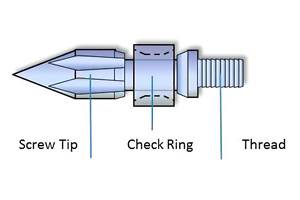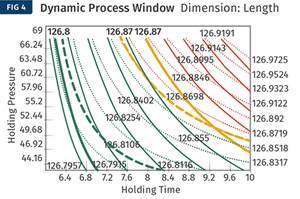Putting the ‘Flexible’ in Flexible Film Processing
This blown film processor is no stranger to change when it comes to finding new markets with novel products. Its latest: barrier films.
is quite familiar with capitalizing on new ´óÏó´«Ã½ opportunities. This Dalton, Ga., blown film processor, part of Inteplast Group’s Industrial Films ´óÏó´«Ã½, started in 1978 making large rolls to package wall-to-wall carpet. In a neighborhood recognized as the “carpet manufacturing capital of the world,” that was a pretty good ´óÏó´«Ã½ to be in at the time.
But times change, and P&O changed with them. Its core market began to shift, beginning with the recession of 2008. The housing bubble collapsed, and carpet manufacturing began to wobble as a result. But rather than wring its hands, P&O initiated a complete realignment of its product portfolio. Over the years it expanded into other niches of the industrial film market and delved into food and specialty film packaging. Then last year, it added capacity to produce highly complex barrier films.
“In 2009, we adopted a strategy to deliver superior value to customers by providing packaging films and solutions that meet or exceed expectations for responsiveness, innovation, quality, and reliability,” recalls Dale Brockman, P&O president. “Because of our strategy, we wound up being the go-to people for certain custom products. That in turn, increased our capabilities and knowledge base.”
As one example of this metamorphosis, P&O introduced a high-tensile-strength sealant web that reduced film thickness by 33%, resulting in a high degree of source reduction while maintaining strength and key product attributes of heavier films. “As a result of this success, several of our food sealant-web customers requested that we broaden our product portfolio,” Brockman says. “They wanted us to add the capability to deliver more sophisticated barrier films. This was the impetus driving a new era at P&O as we moved into the complex barrier-film ´óÏó´«Ã½.”
P&O has 70 employees at its 60,000 ft ² plant in Dalton and since 2012 has been part of , a Livingston, N.J.-based integrated plastics manufacturer that produces a wide range of films through its AmTopp and other divisions. P&O’s ´óÏó´«Ã½ has grown significantly since the acquisition, fueled by Inteplast’s broad production portfolio, technical muscle and manufacturing expertise, and its commitment to total quality management.
The new nine-layer barrier film line was purchased by P&O from Brampton, Ont. Brockman says the line was commissioned in under 24 hr and was making commercial film after generating less than 2000 lb of startup scrap. The line paved the way for P&O to make further inroads into markets that require barriers to high moisture, oxygen, light, and chemicals, Brockman says. “The line has tremendous flexibility and offers outstanding control of the process,” he adds. “It will allow P&O to be very competitive in providing formable webs and lid stocks for a wide variety of horizontal form/fill/seal applications, as well as vertical form/fill/seal applications for food packaging and moisture and chemical protection for industrial customers.
“P&O will also be capable of expanding into additional niches of the specialty film markets and broadening our product offerings to existing customers,” Brockman notes. “We believe U.S. demand for specialty films will increase in line with market studies that project it to grow 5.2% a year to $8 billion in 2017.”
Brockman adds, “We are excited to participate in the growth of nylon films for meats, cheese, dry foods, industrial applications, and medical applications, and to bring to these markets our ability to produce thinner but higher-performing coextruded films to further reduce packaging costs.”
Related Content
Got Streaks or Black Specs? Here’s How to Find and Fix Them
Determining the source of streaking or contamination in your molded parts is a critical step in perfecting your purging procedures ultimately saving you time and money.
Read MoreOptimizing Pack & Hold Times for Hot-Runner & Valve-Gated Molds
Using scientific procedures will help you put an end to all that time-consuming trial and error. Part 1 of 2.
Read MoreThree Key Decisions for an Optimal Ejection System
When determining the best ejection option for a tool, molders must consider the ejector’s surface area, location and style.
Read MoreInjection Molding: Focus on these Seven Areas to Set a Preventive Maintenance Schedule
Performing fundamental maintenance inspections frequently assures press longevity and process stability. Here’s a checklist to help you stay on top of seven key systems.
Read MoreRead Next
See Recyclers Close the Loop on Trade Show Production Scrap at NPE2024
A collaboration between show organizer PLASTICS, recycler CPR and size reduction experts WEIMA and Conair recovered and recycled all production scrap at NPE2024.
Read MoreFor PLASTICS' CEO Seaholm, NPE to Shine Light on Sustainability Successes
With advocacy, communication and sustainability as three main pillars, Seaholm leads a trade association to NPE that ‘is more active today than we have ever been.’
Read More










